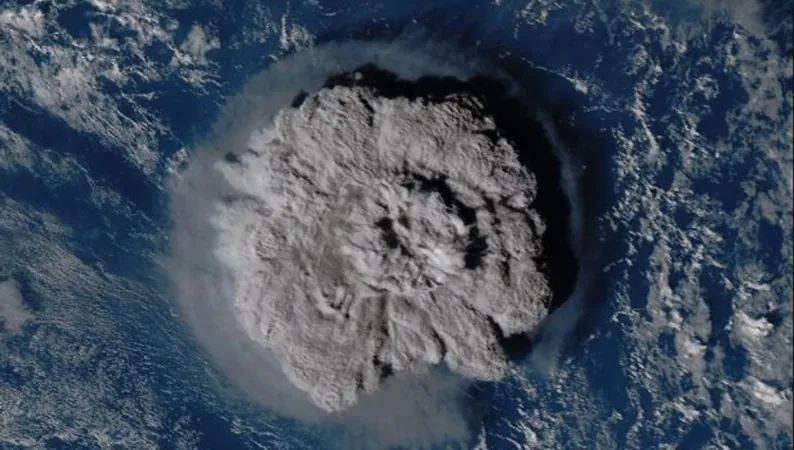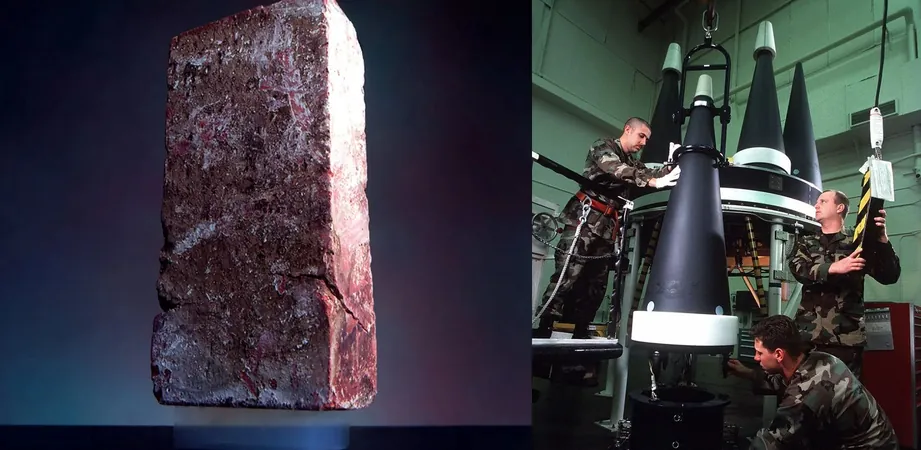
Did Earth Once Boast a Ring System Like Saturn’s? Shocking Evidence Suggests Yes!
2024-10-12
Author: Ming
Introduction
Groundbreaking research has uncovered compelling evidence that Earth might have possessed a ring system akin to that of Saturn—a finding that could radically reshape our understanding of the planet's ancient history. Yes, you heard it right! This revelation, published recently in Earth and Planetary Science Letters, suggests that as long as 466 million years ago, during a period known as the Ordovician impact spike, Earth was bombarded by meteors in a highly unusual pattern.
Research Findings
The research team, led by Professor Andy Tomkins from Monash University in Australia, meticulously analyzed geological data and plate tectonic reconstructions from the Ordovician era. Astonishingly, they discovered that all 21 recorded asteroid impacts occurred within a narrow band—30 degrees of the equator—despite over 70% of Earth's continental crust lying outside this zone. Conventional theories fail to explain this anomaly, prompting the researchers to propose that a massive asteroid's close encounter with Earth shattered it into a debris ring due to tidal forces, much like the stunning rings encircling Saturn and other gas giants.
Impact of the Hypothesized Ring System
What’s even more jaw-dropping? Over millions of years, materials from this hypothesized ring gradually plummeted to Earth, accounting for the surge in meteorite impacts reflected in geological records of that time. Professor Tomkins remarked, "We also see that layers in sedimentary rocks from this period contain extraordinary amounts of meteorite debris."
Climate Consequences
The implications don’t stop there! The potential climate impacts of such a ring system could have cast significant shadows on Earth, resulting in altered sunlight exposure and potentially contributing to a dramatic global cooling event known as the Hirnantian Icehouse. This period is recognized as one of the coldest intervals in the last 500 million years of Earth's history.
Significance of Findings
"What makes this finding even more intriguing is its implications for global temperatures," Tomkins elaborated, emphasizing how extraterrestrial events have the power to shape our climate in unprecedented ways.
Unique Distribution of Impact Craters
Unlike the more random distributions of craters observed on celestial bodies like the Moon and Mars, the localized nature of these Ordovician impacts raises eyebrows. The researchers employed a Geographic Information System (GIS) approach to scrutinize stable tectonic plate regions, pinpointing areas like Western Australia, Africa, North America, and parts of Europe that could preserve these craters. Notably, only 30% of the suitable regions were close to the equator, yet remarkably, all the impact craters aligned within this strip.
Conclusion
"The odds of all 21 craters forming near the equator, if they were unrelated, are extremely improbable," Tomkins explained. "We would expect to see numerous craters scattered across higher latitudes as well." This pioneering work doesn't just challenge existing geological narratives but heralds an exciting chapter in Earth’s evolutionary history involving celestial events. It invites us to ponder: could other ancient ring systems have played pivotal roles in shaping life and climate on our planet at different points in time?
The mystery deepens! As researchers continue their exploration of Earth's past, they may stumble upon even more revelations that intertwine the history of our planet with the vast cosmos. What other surprises might lie in our solar system, waiting to be uncovered? Stay tuned as we embark on this thrilling journey through time and space!



 Brasil (PT)
Brasil (PT)
 Canada (EN)
Canada (EN)
 Chile (ES)
Chile (ES)
 España (ES)
España (ES)
 France (FR)
France (FR)
 Hong Kong (EN)
Hong Kong (EN)
 Italia (IT)
Italia (IT)
 日本 (JA)
日本 (JA)
 Magyarország (HU)
Magyarország (HU)
 Norge (NO)
Norge (NO)
 Polska (PL)
Polska (PL)
 Schweiz (DE)
Schweiz (DE)
 Singapore (EN)
Singapore (EN)
 Sverige (SV)
Sverige (SV)
 Suomi (FI)
Suomi (FI)
 Türkiye (TR)
Türkiye (TR)